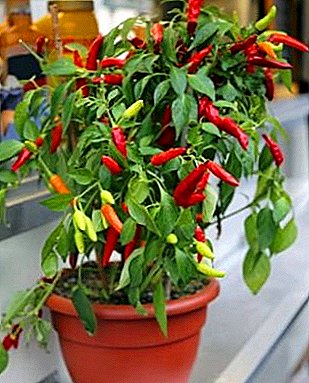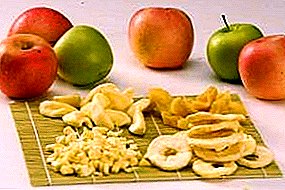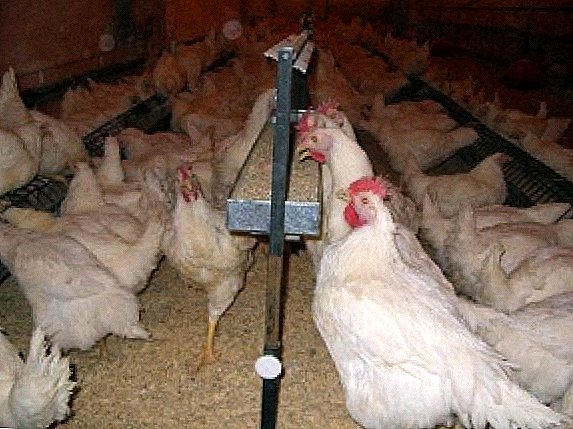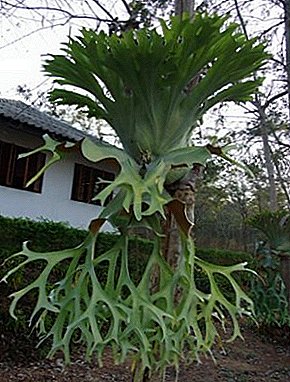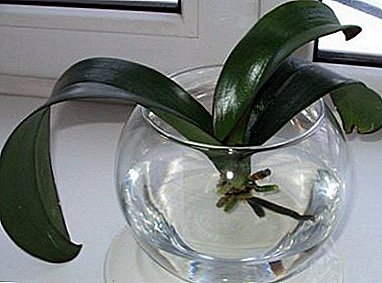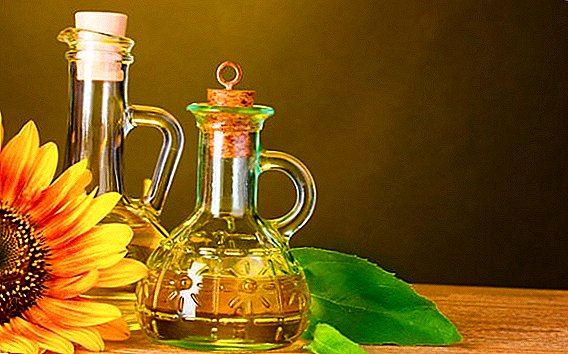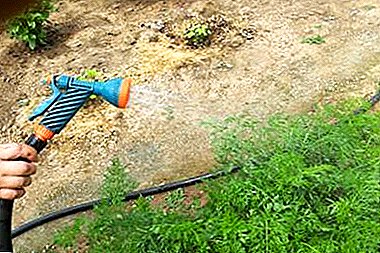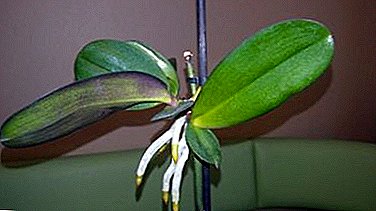
Orchid reproduction by children is the most common method. And this is not surprising, since the plant can be propagated at home in this way literally the first time. Only in this case it is important to observe caution and be guided by all the rules for the care of the young sprout.
What is this part of the plant?
Children are young shoots that form on a stem, peduncle or at the roots of a mature plant.
When is it better to choose this method?
This method of breeding orchids is used in the case when, instead of a flower in a plant, one or several children form on the peduncle. They can be located at the end of the peduncle and in the center. Before you remove the baby from the plant, you need to wait for 3-4 leaves to grow, and their length will be 5 cm. You can speed up this process, if you create the required conditions.
Cases in which you should not resort to it
Babies that were formed directly on the stem are not recommended to be separated.. The reason is that they may lack their own roots and, if mishandled, can kill the whole plant.
Preparation process
Getting a sprout
If the children live right on the flower arrow of the original outlet, then it is not necessary to wait for the formation of roots. And when there will be 4 leaves on it, then it can be simply separated. After that you need to perform a number of preparatory actions:
 Slices on the peduncle and on the baby must be treated with crushed activated carbon or cinnamon.
Slices on the peduncle and on the baby must be treated with crushed activated carbon or cinnamon.- Dry the baby for about a day, and then deposit it in a fine fraction substrate in which it must sprout. The bottom pair of little leaves will turn yellow in time.
- For rooting orchid babies it is better to use a mini-teplichku, which must be respected temperature 22-25 degrees. The roots are formed for a very long time, sometimes for these purposes it is necessary to use phytohormones, spraying the soil with Epin.
The leaves themselves are not recommended to be treated with hormones, as the formation of roots will be prolonged, but the leaves will grow.
Important! It is impossible to pick off the leaves, since they themselves will fall off when the supply of high-calorie elements decreases. By this time, the first roots may already have developed.
- To stimulate the growth of roots on the baby, you can use another method - close placement to the water. For these purposes, plastic boxes are required, a flat piece of foam in which to perform a small recess. In it fasten firmly and thoroughly an orchid outlet.
- Then pour water into the box, lower the foam with the baby and cover with polyethylene. Under the action of increased moisture and heat, roots will form faster.
Choosing a place for future landing
The first step is to prepare the tank for landing. Orchid roots should have enough light, so it’s better to choose a pot with transparent polymer walls. You can also use glass vases to highlight the beauty of the flower and its elegance. But if direct sunlight falls, the delicate roots of an orchid are at risk of getting burned.
 After the pot to prepare a nutrient substrate. It must meet all the needs of the plant and the conditions of detention. If the indoor air is dry, then a moisture-intensive mixture is used, which includes such components:
After the pot to prepare a nutrient substrate. It must meet all the needs of the plant and the conditions of detention. If the indoor air is dry, then a moisture-intensive mixture is used, which includes such components:
- pine bark;
- moss;
- sphagnum;
- charcoal.
Take all the ingredients in the proportion of 5: 2: 1: 1. If you take all the components, but in equal proportions, you can get a soil mixture with high or medium moisture content. The place should be well lit, but without the direct influence of sunlight. Humidity is allowed 60-70%, and the air temperature 21-23 degrees.
How to multiply?
The process of breeding orchids kiddies is as follows:
- Carefully separate the process from the parent plant. Do it with a sharp knife. Before you transplant a baby, you need to make sure that the orchid is fully prepared to live separately and has a root system.
- After removing the seedling it is not necessary to immediately dig into the ground. Initially, cut the place a little dry, and it is better to lay the baby in the sun for 30 minutes. Then grind the activated carbon and sprinkle the cutoff with the obtained powder for disinfection.
- Drill special holes in the selected pot, except for those that serve as drainage.
- Now you can begin the landing process. Planting works should be carried out so that the neck of the root type is at the level of the surface of the container. During transplantation, follow the roots, so as not to injure them. The pot should not be too spacious, and even a little small. In this case, more likely, the baby will take root.
- Container filled with soil mixture prepared in advance. It is necessary to closely monitor the roots, so that they are completely covered with earth. If for some reason the roots do not fit, then they can be placed on top, but then you have to close them with a certain amount of moss.
- When you first add a substrate, you need to shake the pot so that the soil subsides. Ramming the ground with your fingers is prohibited.
- After transplanting install a flower at the window. In the first days you can not conduct watering, and do it only on the 3rd day. It will take time for the cut to become completely dry. This will protect the orchid from the development of diseases under the action of moisture or moss microorganisms.
- After transplanting the plant must be held in a room with high humidity.
A photo
And here is the breeding procedure on the photo.


If nothing happens
There are situations when the baby does not give an orchid for a long straps of roots. This problem can be solved by placing the lower part of the plant shallowly in the water. But it also does not guarantee the appearance of the roots. For example, these types of orchids, like vanilla and ludizii, are best rooted in water.
Aftercare
When the transplant process has been completed, The main task of the grower is reduced to the competent care of the child. Watering is very important, as the plant needs high humidity. But here it is important not to overflow water, otherwise the roots will rot. After the first watering, the planted baby can only be wetted after the soil has completely dried.
At first, growth stimulants and fertilizers should be added to the water for irrigation. In addition to watering, you need to ensure the flower optimum lighting and comfortable temperature.
Orchid reproduction by children is a simple process that even a beginner can. Just before this, it is important to carefully prepare everything, from the children themselves to the pot with soil. After planting, it is important to maintain conditions suitable for the development of the plant and to care for it regularly.


 Slices on the peduncle and on the baby must be treated with crushed activated carbon or cinnamon.
Slices on the peduncle and on the baby must be treated with crushed activated carbon or cinnamon.